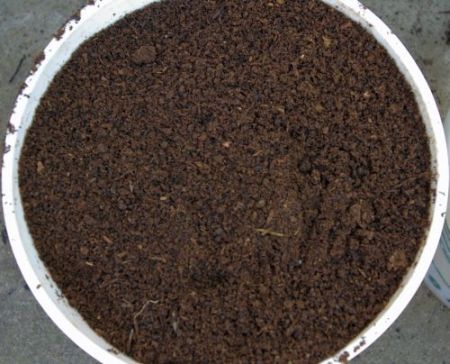
Cow/Worm Castings
Earlier this year I wrote of a lesson learned in India of turning Cow Dung to Worm Castings. This method of creating castings, rich organic soil from worms, as not unknown in the USA, but there was not much interest in it. As someone from the Nardanya Research Farm told me in India “you in the USA know about worm castings but do not appreciate worm dung.”
On my son’s land up north, with the help of the dairy farmer across the road, I created two rows of cow dung and placed in some worms. In India they just used the cow dung with the worms and do not add any carbon, like wood chips, saw dust, straw or crushed cardboard like we do in making compost to feed the worms. I knew this but also having heard how nitrogen-rich dung was I thought I should add some carbon, and added saw dust provided by another neighbor.
My daughter-in-law and grandsons kept the piles cool with water, and when I was there in July the worms were lively and seemed well. I decided to add some more cow dung but this time the neighbor only had readily available some cow bedding material, a mixture of straw, crushed cardboard, saw dust with dung and urine. He asked if that was okay and again, thinking we need to add carbon anyway, I said okay.
Last weekend I was up there on a short visit and decided to bring some “cow dung to worm castings “ back with me. To my surprise the piles were of very fine brown soil but the worms were few in number and seemed sickly.
The last few years I have noticed in my worm depository where I grow and nurture worms on a pile in the yard and in my worm box where I make castings, that too much carbon, wood chips, on the pile make it hot and the worms disappear. Thinking back over the years to a few remarks made to me about making compost I think I understand what is happening.
For making compost carbon and nitrogen are important. However, in the process of composting, like in the stomach of a cow, the carbon is consumed by the nitrogen. This makes for edible food for worms be it in the worm depository pile, the worm box or the rows of cow dung up north. However, when much more carbon is added to the compost it consumes the nitrogen, making the compost or cow dung low on food for worms. The persons in India were right. There is no need to add more carbon to already composted cow dung. Just add worms and keep it shaded and cool.
The only exception to the above is that in the winter I need to add a layer of carbon, leaves and wood chips over the top pf the worm depository. The layer on top will freeze, keeping the worms below nice and warm.
Before Will Allen of Growing Power was famous I used to go to workshops and tours at Growing Power and ask question after question. Obviously I did not ask about the use of carbon in worm depositories and turning cow dung to worm castings I did not ask.
The Good news for my son and his family is that he now has a lot of good enriched soil to put in the garden this fall or to add to a worm/compost/depository pile during the winter. If making a pile, all they need to do is add to add some more cow dung, straight, and top the pile off with lots of carbon before the frost and freeze. The worms will once again grow strong, reproduce and keep turning cow dung to worm castings.
Comments
(:commentboxchrono:)